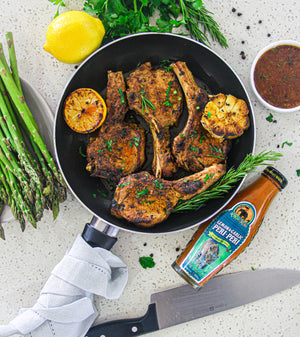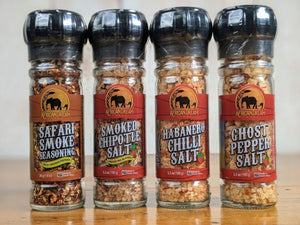The Leopard Needs Our Support
Jan 24, 2021

Thanks to their patterned coats it’s actually pretty difficult to spot a leopard in the wild. The true survivalists of the big cat world, these speckled beauties are masters of adaptation. You can find them thriving in our planet’s most dramatic environments: dense rainforests, vast grasslands, barren deserts and even snow-capped mountain ranges. But there’s one life-threatening challenge this species can’t overcome on its own: us.
Right now, leopards are “vulnerable” according to the International Union for Conservation of Nature (IUCN). But with their populations in steep decline, these animals are toeing the line between survival and extinction.
With endangerment just around the corner, the leopard needs our help. To save them, we must better understand exactly what challenges these felines face, and more importantly, what we can do to ensure their survival.
Ceremonial Wear and the Fur Trade
The leopard’s luxurious spotted coat is eye-catching, but it often costs the cats their lives. According to conservation activist Guy Balme, the animal’s fur is its biggest downfall. These felines are up against all the same tragic setbacks faced by other big cats (habitat loss, trophy hunting and scarcity of prey to name a few) but they also carry a unique threat on their own backs: their spotted pelts.
Thankfully, international markets have become less vested in exotic furs since the 1980s when authentic pelts fell out of vogue in the Western World. The plot twist? Despite the drop in global demand, Africa’s domestic fur trade still carries on strong.
Leopards in particular are at risk because their pelts are traditionally used as capes, robes and religious garments for select groups like the Shembe Church. They’re also still commonly worn by Zulu royalty. Despite criticism on the practice, the current Zulu king regularly makes appearances wearing the cat’s pelt alongside traditional medals and insignia, encouraging others to do so as well.
In recent years, African organizations like Furs for Life have sought to save the continent’s leopards by providing local religious communities with synthetic fur substitutes. But even with their promising advancements, leopard populations in southern Africa have declined 80% in recent decades.
Farming Practices and Loss of Habitat
Leopards are beautiful but they’re not so easy to live with. Over the last several decades Africa’s communities have expanded to accommodate growing populations and larger cities. But as these communities grow, they claim more of the leopard’s precious habitat. Pressed by development, the continent’s regional communities have found it difficult to live peacefully alongside neighboring leopards.
While some wild animals are able to adapt and live harmoniously in close contact with human settlements, the leopard’s hunting spirit and undiscerning diet make it a likely predator for livestock. Frustrated by their loss of animals, local farmers often retaliate by slaughtering the big cats in a desperate attempt to prevent future losses.
Conservation Efforts—How You Can Help

According to the African Wildlife Foundation, there’s already a path to success—we need only to follow the formula.
To save the leopards, we must work with communities that live alongside them in order to humanely protect their livestock from becoming prey to neighboring cats. This includes building predator-proof enclosures and educating local farmers on the species. We also need to support initiatives like Furs for Life that offer innovative solutions to help lessen pelt demand from African religious groups.
The solutions are there already. The bad news? They require funding, and the African conservation movement as a whole is facing a dire budget crisis. That’s why we’ve stepped in to do our part.
Each time you buy a bottle of ADF hot sauce or spice, a portion of your purchase goes straight to saving Africa’s most vulnerable animals. Those funds also go towards supporting partners like Wild Shots Outreach, a grassroots organization that promotes respect for wildlife among the local community, as well as Paws Trails, a team of wildlife-lovers who raise awareness through the beauty that nature has to offer.
When it comes to saving the leopard, there’s no overnight fix. But together with your contributions, we can spot hope on the horizon for these beautiful big cats.




